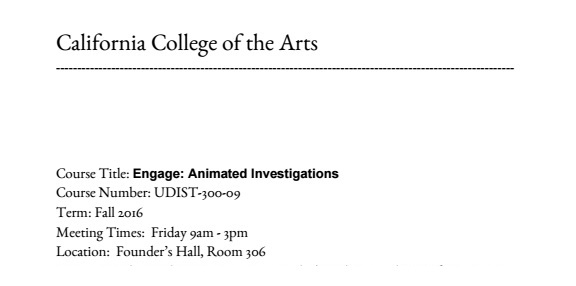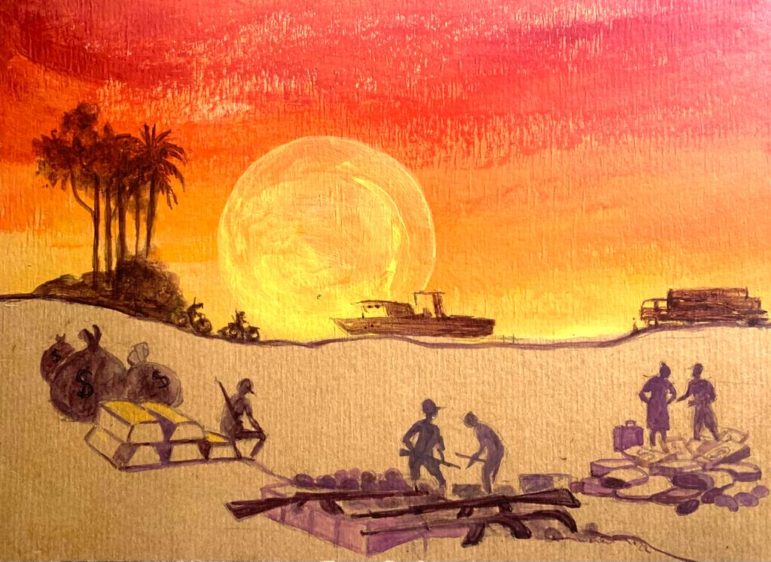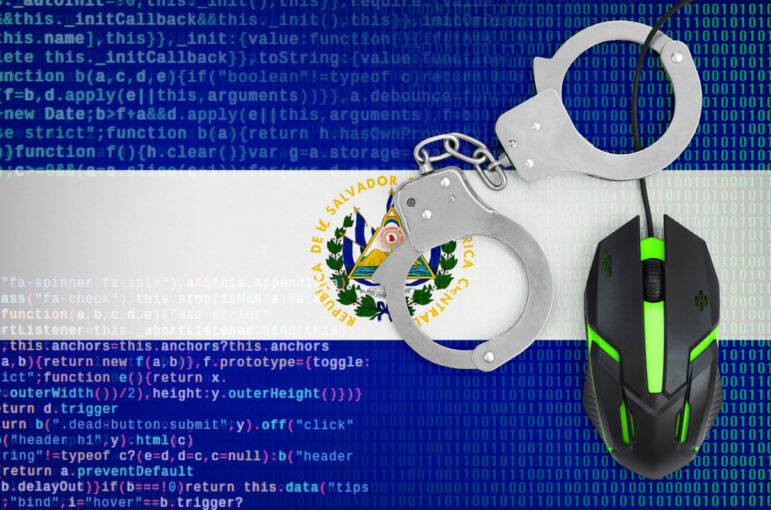

Blending Animation and Investigative Reporting
In 2015, The Center for Investigative Reporting embarked on a new experiment: piloting a collaborative class with the California College of the Arts. Given our penchant for animated storytelling, we wanted to explore and encourage ways to further experiment in the field, drawing on students’ creative energy.
Through our partners at the college’s Center for Art and Public Life and assistant professor Christoph Steger, we developed a new course, Animated Investigations, which debuted last fall and will be taught for three semesters.
For last year’s inaugural class, students heard from CIR staff about the nuts and bolts of investigative reporting and how we’ve employed animation to creatively tell difficult stories, drawing lines to students’ own artistic practice.
CIR Creative Director Michael I Schiller explained the process behind our Emmy-nominated short film, “The Box,” and how he turned one man’s story of solitary confinement into a gripping animation with illustrator Anna Vignet. Reveal producers Ike Sriskandarajah and Amy Walters discussed how they translate complex reporting into compelling audio pieces.
We provided the class with Reveal stories and segments to use as source material for several assignments, from story-inspired GIFs to their own original animations of Reveal segments.
Through our first class, we learned that we wanted to make two changes to the course this year: We wanted to provide students with more hands-on journalism instruction and move away from simply providing Reveal stories to animate. And we wanted students to focus their work on the San Francisco Bay Area to connect with their own communities, a philosophy at the heart of the Center for Art and Public Life’s ENGAGE program.
This semester, we took things a step further in our second iteration of Animated Investigations, challenging students to identify and research topics that were of importance to the Bay Area and then use the information they uncovered as the basis for their final projects.
 Here’s our updated syllabus, courtesy of Steger. Overall, we spent less time on smaller assignments that revolved around animating existing reporting and more on teaching students how to find their own stories and sources. I led a session on ways to identify and engage key stakeholders for a story. Senior Editor for Data Jennifer LaFleur gave an “investigative journalism 101” presentation that included a guide to filing a public records request.
Here’s our updated syllabus, courtesy of Steger. Overall, we spent less time on smaller assignments that revolved around animating existing reporting and more on teaching students how to find their own stories and sources. I led a session on ways to identify and engage key stakeholders for a story. Senior Editor for Data Jennifer LaFleur gave an “investigative journalism 101” presentation that included a guide to filing a public records request.
To help center students’ work on issues in the Bay Area, we held a discussion session and came up with a list of under-reported topics that students thought were of local importance. We also asked students to interview people outside class and ask about the local issues they believed were the most pressing.
From these exercises, we gave students ample freedom to select their topics of focus, find source material and create narratives for their final projects. In return, students produced a variety of creative animations that were rooted in facts and interviews, while trending toward the experimental and abstract.
Two groups chose the housing crisis as their foundation. Terry Vinson, Leah Heejoo Hong, Xuan Song, and Korina Gaona interviewed people about their experiences with housing and animated their stories:
Two other groups dug into earthquake-related issues, with students Nina Charuza and Pearl Shen offering frequently asked questions on earthquake safety through a zany collage of facts and found footage:
Student David Wells dedicated his project to Bay Area Rapid Transit’s aging infrastructure, juxtaposing tweets from the official BART account with archival video and sound bites:
You can watch all the students’ final projects, both from this class and our first class, here. We’re proud of the work the students created this semester and welcome these new ideas and approaches. We learned a great deal again during this class and will use those lessons to further hone the curriculum for our third installment of Animated Investigations, which will take place in spring 2018.
Here are a few things we plan to change and improve for the next course:
- Give students more editorial guidance on topic selection and crafting an effective narrative.
- Provide more hands-on training in the tools of journalism, such as interviewing techniques, finding trustworthy sources and instruction on ethics and standards.
- Offer guidance on research skills and encourage students to dig deeper into subjects through interviews with community members and experts.
- Mentor students on how to collaborate effectively in a team of artists from different disciplines.
Stay tuned for more as we reconvene the class in 2018.
This post was first published on the website of Reveal, from The Center for Investigative Reporting, and is cross-posted with permission.
 Cole Goins is senior manager for engagement and community collaborations for Reveal at the The Center for Investigative Reporting. He develops ways to increase and incorporate Reveal’s audience, both online and off. Goins was previously engagement editor at The Center for Public Integrity. He can be reached at cgoins@revealnews.org.
Cole Goins is senior manager for engagement and community collaborations for Reveal at the The Center for Investigative Reporting. He develops ways to increase and incorporate Reveal’s audience, both online and off. Goins was previously engagement editor at The Center for Public Integrity. He can be reached at cgoins@revealnews.org.








